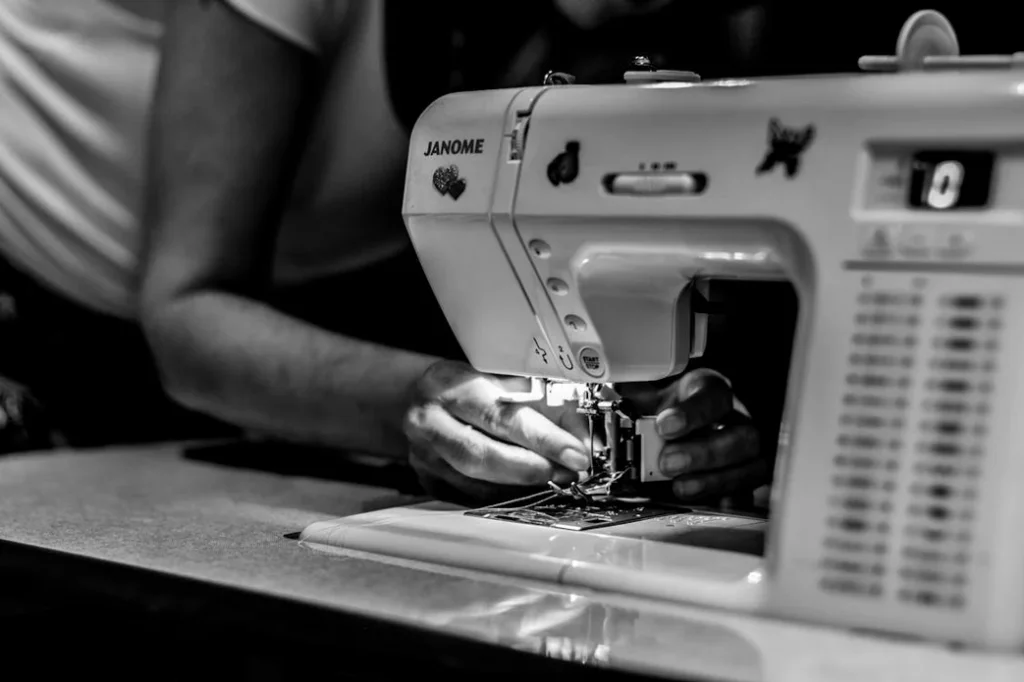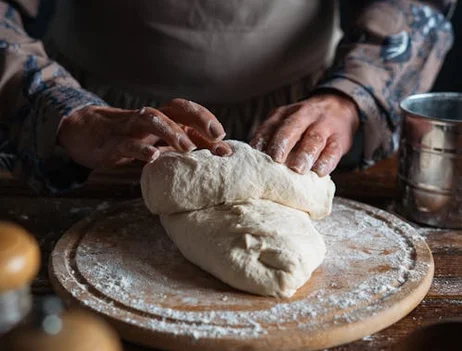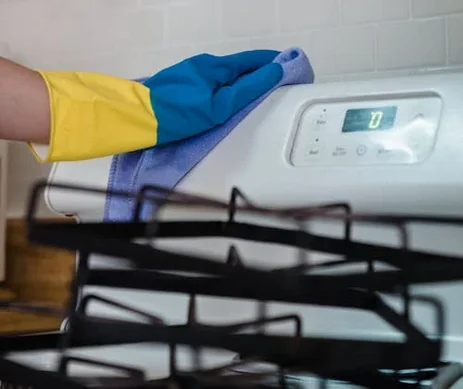Before life hacks were trending on social media, our parents and grandparents were the original masters of practical frugality. Their money-saving strategies weren’t just trendy minimalism—they were born from necessity and genuine resourcefulness. These tried-and-true approaches to stretching a dollar didn’t just save money; they often created stronger communities, developed valuable skills, and produced less waste than our modern consumption habits.
1. The Magnificent Sunday Roast Strategy

The Sunday roast wasn’t just a delicious tradition—it was the cornerstone of an entire week’s meal planning. Families would prepare a substantial cut of meat on Sunday, enjoying the main feast with all the trimmings as the week’s culinary highlight. The real magic happened in the days that followed, as the remaining meat transformed into entirely different meals. If Sunday roast isn’t a favorite as leftovers, EatingWell has a list of meals that specifically just taste better and better with each day.
Monday might feature sliced roast beef sandwiches, while Tuesday’s dinner could showcase a savory shepherd’s pie made from chopped meat and leftover vegetables. By Wednesday, any remaining scraps would find their way into a hearty soup, complete with homemade stock from the bones. This methodical approach to meal planning eliminated food waste, maximized protein purchases, and required cooking just once for multiple meals—a strategy that remains financially and environmentally sound today.
2. The Neighborhood Tool Library

Long before tool-sharing apps existed, our parents created informal community lending systems that prevented everyone from purchasing rarely-used items. Your father might own a ladder, while the neighbor had a pressure washer, and someone down the street possessed a collection of specialized gardening equipment. This unwritten arrangement allowed everyone access to occasional-use tools without the expense of individual ownership. To this day, The Everygirl insists that knowing your neighbor is more important than ever.
These lending relationships built community connections that extended beyond mere financial benefits. Regular tool borrowing created natural opportunities for knowledge sharing, as more experienced users would offer tips and techniques along with the borrowed item. The system also incentivized proper tool maintenance and care, as everyone understood that their equipment would be used by others who would notice its condition.
3. The Envelope Budgeting System

Our parents mastered cash flow management with a brilliantly simple system: the categorical cash envelope. Each payday, they would withdraw precise amounts of cash for different spending categories—groceries, entertainment, clothing, and miscellaneous expenses. These funds were physically placed in labeled envelopes, creating tangible spending boundaries that prevented budget overruns. Actual Budget further details different handy categories in which to divide cash.
The genius of this system was its built-in accountability mechanism, as empty envelopes provided immediate feedback about spending patterns. When the “eating out” envelope was empty, that category was closed until the next payday, forcing creative home cooking instead of restaurant splurges. This physical relationship with money created an awareness of spending that digital transactions often fail to provide, making it easier to identify unnecessary expenses.
4. The Strategic Freezer Investment

Our parents recognized that a well-stocked freezer was essentially a food bank that paid dividends through careful management. They purchased seasonal produce at peak harvest when prices plummeted, then preserved these items through freezing or canning for year-round use. This approach captured foods at their flavor peak while taking advantage of market surpluses that drove down prices. Surviving and Thriving notes also that this appliance enables additional budgeting tricks, like preserving leftovers, truly making it one of the most important investments a person can make.
Bulk meat purchases directly from farmers or during supermarket sales were divided into meal-sized portions and precisely labeled before freezing. The initial investment in a separate freezer quickly paid for itself through these strategic buying opportunities and the reduction of food waste. This approach also minimized shopping trips, reducing the temptation for impulse purchases that typically occur during frequent store visits.
5. The Mending Mindset

Our parents lived by the philosophy that nearly anything could be repaired rather than replaced. Clothes with holes were darned, appliances with issues were disassembled and fixed, and furniture was reupholstered rather than discarded. This mending mindset wasn’t just about saving money—it reflected a deeper relationship with possessions as items of value worth maintaining.
Basic sewing skills were considered essential knowledge, allowing for hemming, button replacement, and simple repairs that extended clothing lifespans by years. Appliance repair manuals were consulted before service calls, and neighborhood handymen shared knowledge about common household fixes. This approach not only saved money but created a self-reliance that has largely disappeared in our replacement-oriented consumer culture.
6. The Victory Garden Approach

Long after World War II ended, many of our parents maintained productive vegetable gardens that significantly reduced grocery bills. These backyard plots provided fresh produce throughout growing seasons and generated surpluses that could be preserved for winter use. Even small-space gardens focusing on high-yield plants like tomatoes, zucchini, and herbs could make meaningful contributions to the family food supply.
Gardening offered financial benefits beyond the harvested produce, serving as an inexpensive hobby that combined physical activity, stress relief, and family projects. Children learned valuable lessons about food systems while helping with planting, maintenance, and harvesting. Seed saving from year to year further reduced costs, while creating plants specifically adapted to local growing conditions.
7. The Multi-Generation Housing Arrangement

Before separate households became the expected norm, many families embraced multi-generational living arrangements that distributed financial burdens across more earners. Grandparents often provided childcare, eliminating daycare expenses, while their lifetime of experience offered valuable household management knowledge. This approach to housing maximized resources while creating stronger family bonds.
Shared housing expenses meant that larger, better-quality homes became affordable, often in neighborhoods with superior schools and amenities. Utility costs were distributed across more individuals, and bulk purchasing became more economical with larger household numbers. Beyond the financial benefits, these arrangements provided built-in support systems for both child-rearing and elder care, addressing two of the most expensive service categories in modern budgets.
8. The Entertainment Recalibration

Our parents found joy in low-cost entertainment options that often created stronger social connections than today’s expensive alternatives. Board games, card nights, and potluck dinners rotated between neighbors’ homes, providing regular social interaction without restaurant bills. Public parks, libraries, and community events offered free or low-cost outings that became weekly traditions rather than occasional splurges.
Family movie night meant everyone gathering around a single television rather than separate screens, often with homemade popcorn instead of expensive theater concessions. Special occasions like birthdays emphasized thoughtful celebrations rather than extravagant productions with hired entertainment and catering. This approach to leisure created memorable experiences without the financial strain that often accompanies modern entertainment expectations.
9. The Gift Economy Participation

Our parents mastered the art of meaningful gift-giving without excessive spending through skillful participation in various gift economies. Hand-made presents, home-baked goods, and service vouchers were considered thoughtful rather than cheap, emphasizing the personal connection between giver and recipient. Holiday budgets were established and maintained, preventing the January financial hangover that now follows many celebration seasons.
Children’s birthday parties featured homemade cakes and simple games rather than elaborate themes and expensive venues. Family members developed signature gifts—Grandma’s famous apple pie, Dad’s hand-crafted wooden toys, or Mom’s knitted winter accessories—that became treasured traditions rather than merely things to unwrap. This approach emphasized relationship cultivation over consumer participation, creating memorable celebrations without financial strain.
10. The Cooking-From-Scratch Commitment

The convenience food revolution hadn’t fully transformed American kitchens during our parents’ prime homemaking years, and their from-scratch cooking provided substantial savings. Pancake mixes, seasoning blends, salad dressings, and baked goods were created from basic pantry ingredients rather than purchased as premade products. This approach eliminated the significant markup on processed foods while providing healthier, preservative-free alternatives.
Basic cooking skills allowed our parents to transform inexpensive ingredients into satisfying meals that stretched limited budgets. Beans, rice, and seasonal vegetables formed the foundation of nutritious dinners that cost pennies per serving compared to prepared alternatives. The time investment in cooking paid financial dividends while providing valuable family bonding opportunities during meal preparation and consumption.
11. The Strategic Clothing Approach

Our parents developed systematic approaches to clothing that minimized expenses while maintaining appropriate wardrobes for all family members. Children’s clothes were purchased with growth in mind, often a size larger than needed with cuffs that could be let down as height increased. Hand-me-down systems between siblings, cousins, and neighborhood families kept clothing costs minimal for quickly growing children.
Adult wardrobes featured fewer, better-quality pieces that could be worn for years rather than disposable fast fashion that quickly deteriorated. Seasonal sales were carefully monitored, allowing for purchases at significant discounts rather than convenience buying at full price. Laundry was handled with precision to extend clothing lifespans, with appropriate water temperatures, gentle detergents, and careful stain treatment protocols.
12. The DIY Holiday Decoration Tradition

Long before craft stores sold premade holiday embellishments, our parents created seasonal decorations from natural materials and repurposed items. Pine cones gathered during family walks became Christmas ornaments when painted or dusted with artificial snow. Fall leaves were pressed between wax paper to create window hangings that celebrated autumn’s color palette.
These homemade decorations were carefully stored and reused for multiple years, accumulating sentimental value with each passing season. Children’s handcrafted school projects were incorporated into home displays, creating evolving decoration collections that tracked family history. This approach transformed holiday decorating from a consumption activity to a creative tradition that brought families together while minimizing seasonal spending.
13. The Preventative Maintenance Religion

Our parents understood that regular maintenance was significantly less expensive than emergency repairs or premature replacements. Cars received scheduled oil changes, tire rotations, and mechanical check-ups regardless of perceived problems. Home systems were inspected seasonally, with gutters cleaned, furnaces serviced, and small issues addressed before they developed into costly disasters.
This maintenance mindset extended to personal possessions, with leather shoes regularly polished, wooden furniture oiled, and tools cleaned after each use. The time investment in proper care extended useful lifespans for virtually everything the family owned. This systematic approach to maintenance created a household culture of stewardship rather than disposability, resulting in substantial long-term savings.
These proven strategies remind us that genuine frugality isn’t about deprivation—it’s about resourcefulness, creativity, and intentional choices. While today’s financial landscape differs significantly from previous generations, these fundamental approaches to stretching a dollar remain surprisingly relevant and effective in our modern economy.


